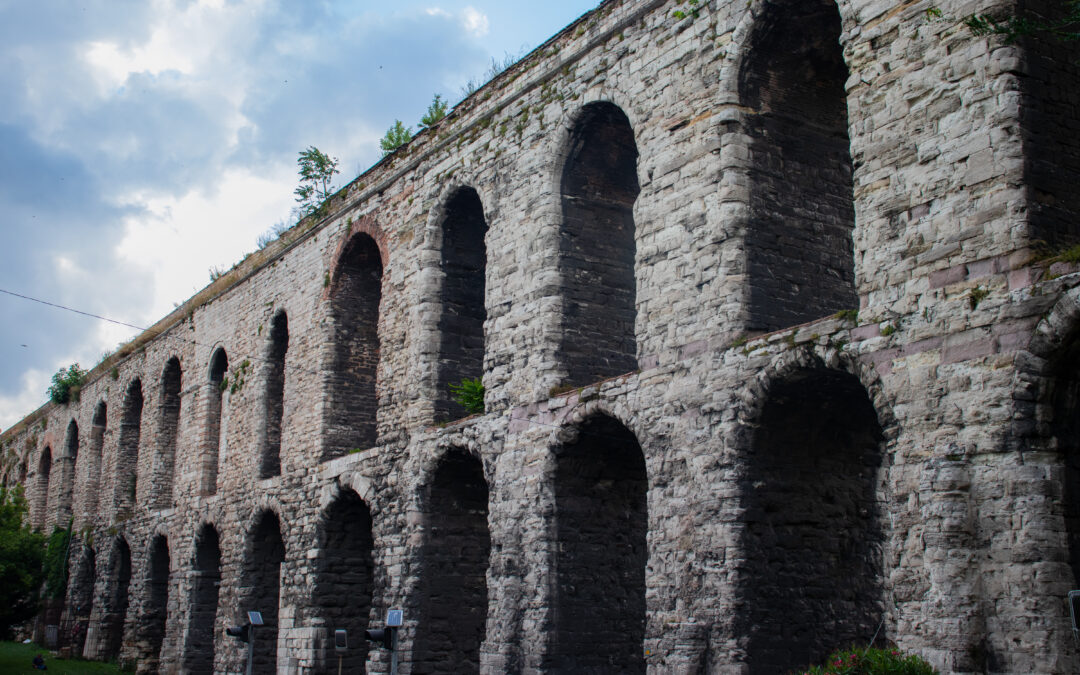Four Reasons to Take “History of Byzantium” in Your Catholic Homeschool
ADDENDUM: History of Byzantium is now available as a recorded, self-paced course.
This fall I am teaching a world history high school course title “History of Byzantium.” This course will cover the fortunes of the Byzantine Empire from the 5th century up until its final collapse in 1453 at the hands of the Ottoman Turks. Some seats are still available, but why should you consider signing your student up for this course? What’s so special about Byzantium?
If you need a last-minute history addition to your Fall 2022 calendar, then here are some reasons to choose “History of Byzantium”!
1. Balanced Approach to European History
Almost every high school student will take European history at some point. European history classes, however, tend to be skewered towards Western European history—the affairs of Britain, France, Spain, Germany, and Italy take center stage in these classes. We tend to only learn about Eastern Europe insofar as it overlaps with the Western narrative.
There is a certain logic to this: North America was first colonized and settled under the auspices of the kingdoms of Western Europe, so we naturally feel a greater connection to these countries. Furthermore, since the vast majority of Catholics in the U.S. are Latin rite, the lands of Latin Christendom feel more like “home” from a cultural standpoint.
But Europe doesn’t end at Germany’s eastern border, and European history is much bigger than the affairs of the West! If you want to get a balanced approach to European history, you need to learn about Greece, the Balkans, Bulgaria, the Black Sea, and the peoples of the Eurasian Steppe, as well! From 395 to 1453, the history of these places was the history of Byzantium. Learning this not only helps us understand the history and cultures of Eastern European peoples, but it also helps us understand Western European events better. For example, our understanding of the Italian Renaissance is incomplete if we don’t understand the contributions made by the thousands of Greek exiles who fled to Italy in the 1400s, bringing with them a treasure trove of Greek manuscripts from which the Renaissance intellectuals drew inspiration.
2. Learn About the Other Half of the Church
In his 1995 encyclical Ut Unum Sint on ecumenism, St. John Paul II famously compared the Latin and Greek traditions to two lungs within the body of the Church. Learning the history of Byzantium helps us tap into the cultural and religious ideals that shaped the Greek Christian tradition. Not only Greek-speaking churches but also the Aramaic churches of Jerusalem and Antioch, as well as Egyptian churches under Alexandria, were also mentioned. Byzantium also used to control Syria, Palestine, Egypt, and North Africa, so studying their empire helps us learn about how Christianity developed in all these places. The word Catholic means “universal”; the history of the churches in these places is part of our own religious identity. If we want to realize the Catholicity of our faith fully, it behooves us to acquaint ourselves with the history of our Eastern brethren.
3. Pair With Greek
Is your student taking any of Homeschool Connections’ Greek classes? Pairing this course with Byzantine history is an excellent way to create a unit study. Combining the study of the Greek language with the history of the world’s most enduring Greek empire will give you an awesome immersive experience in all things Greek!
4. It’s Easy!
Okay, let’s cut to the chase! Here’s the real reason why you should sign your student up for History of Byzantium—it’s easy! I know “easy” is somewhat subjective, but what I mean is that relative to other classes, “History of Byzantium” is less intensive. Homework is very predictable: a modest amount of textbook reading every week and a quiz on the lectures each Friday. The textbook is Warren Treadgold’s A Concise History of Byzantium, which at the time of this post is going for $1.79 paperback on Amazon. No complicated assignments, no expensive textbook, no unexpected surprises. It’s a great course to fill a gap in your child’s schedule or give them another world history credit that won’t add too much to their workload.
“History of Byzantium” is recommended for upper-level students due to the fact that Treadgold’s textbook requires adult-level reading comprehension—but if your high schooler is a mature reader, I’m open to 9th and 10th graders as well!
To sign up for History of Byzantium, head on over to the course registration page. Here’s an outline of what we’ll be studying:
Class 1: The End of the Western Roman Empire
Class 2: The Age of Justinian
Class 3: Wars of Heraclius
Class 4: The Coming of Islam
Class 5: The Heresyof Iconoclasm
Class 6: 9th-10th Century Renaissance
Class 7: High Byzantine Culture
Class 8: Western Schism and Crusades
Class 9: The Coming of the Ottoman Turks
Class 10: Attempts at Reunion
Class 11: Fall of Constantinople
Class 12: The Byzantine Legacy
NOTE: This course will be available as a recorded course through our Unlimited Access program after March 15, 2023.






